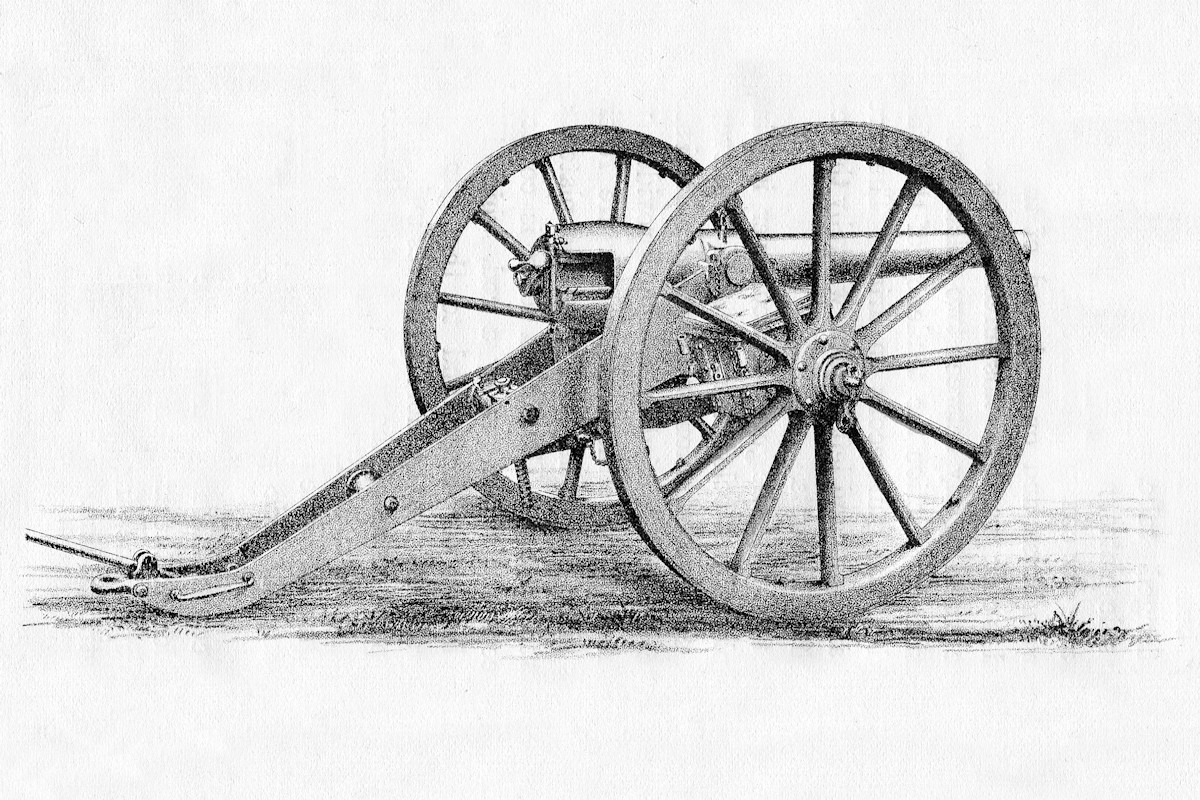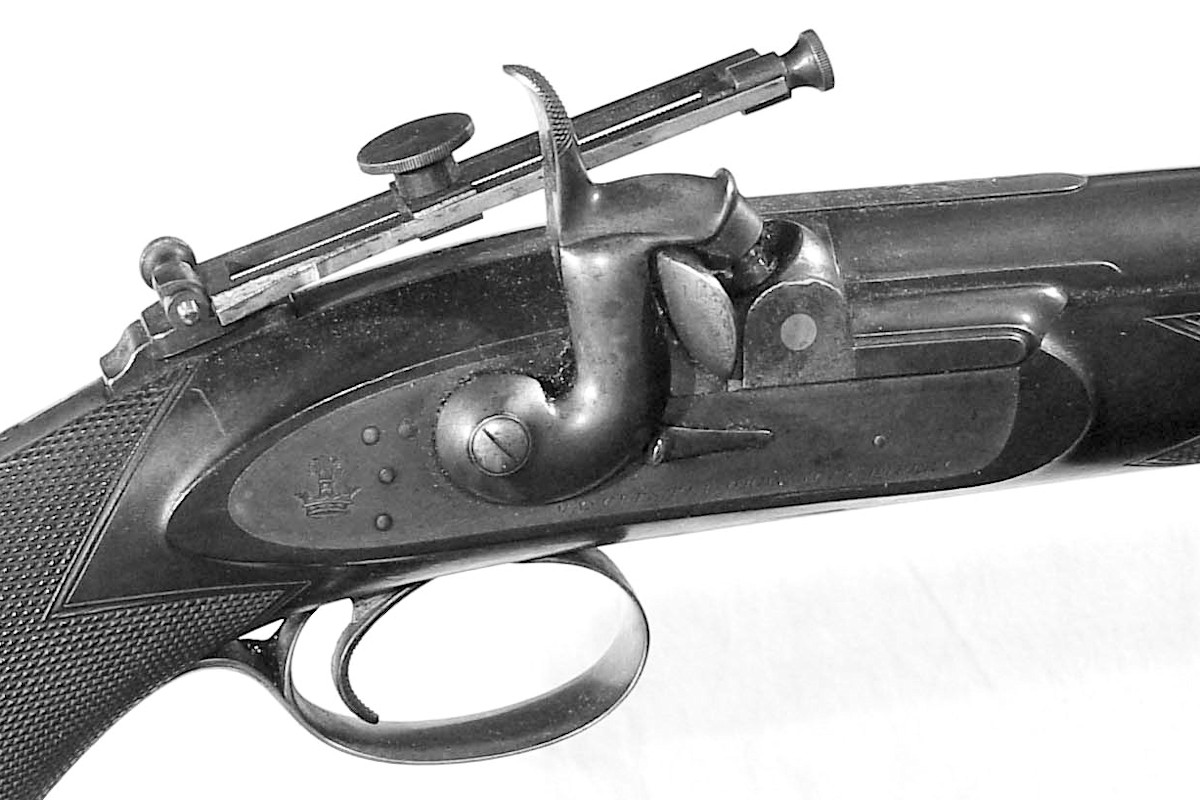Engineer > Great Exhibition > Firearms > Honours
But it was at the Great Exhibition of 1851, where he exhibited a collection of engineers’ tools, remarkable for their excellent workmanship and admirable design, such as had never before been brought together, that the fruits of his labour first met with their proper share of recognition. He then exhibited the measuring machine designed by him, in which the sense of touch was employed, instead of that of sight, and by which he was enabled to detect differences of only one-millionth of an inch in extent. It must be borne in mind that the object of this machine is not to make an original measurement of the total length of any bar, but to compare it in the most accurate manner possible with a nearly similar standard bar of which the exact length is known, and record, to the millionth part of an inch, any difference which may exist between them. To quote the inventor’s own words, it “is a measuring machine for the testing and measuring of standards of size of one inch in length (it should be stated that the machine now being described is constructed to receive a bar only one inch long, whilst that shown at the Exhibition, and made upon a precisely similar principle, was capable of taking in a bar thirty-six inches in length), and of all sizes below that length. The inch standard bar has two small end surfaces one-quarter of an inch in diameter, which are made true planes, perpendicular to the axis of the inch bar. The sides of this inch bar, and of the right-angled groove in which it rests in the machine, are all true planes, and so also are the ends of the two headstocks between which the bar lies. A very small surface plate, with slender arms, which I call ‘the feeling-piece,’ has on each side a true plane; this feeling-piece rests between the standard inch bar and the true plane, on the end of the right-hand headstock. The end plane is moved by means of a screw having twenty threads to the inch. To this is fixed a worm-wheel having two hundred teeth, into which an endless screw works. The endless screw has on it a micrometer wheel with 250 divisions. The screw, worm-wheel, and the divisions on the micrometer, multiplied one into the other, show that the movement of one division drives the end true plane through the one-millionth of an inch. When little or no pressure is exerted upon the planes of the feeling-piece, it will, when raised between the end of the standard inch bar and the end plane, fall by its own gravity; but by turning the micrometer wheel the surfaces are brought so nearly into contact, that at last the movement of one division will cause the feeling-piece to be suspended, so that the movement of one-millionth of an inch is sufficient to support the feeling-piece or let it fall. Perhaps the best idea I can give of the one-millionth of an inch is to state that it might be represented by the ordinary thin French writing-paper divided into about 4,000 thicknesses.” These machines are so extremely sensitive, that the one described is capable of detecting the expansion in a one-inch bar which is produced by merely touching it for an instant with the finger; and in the larger machine – provided the feeling-piece be so adjusted that the movement of one-millionth of an inch would cause it to be suspended – if, instead of the movement of the one-millionth of an inch, the standard bar be touched for one instant by the finger-nail, it will cause the bar to be suspended – the heat from the touch of the finger-nail being sufficient for that purpose. The standard of heat adopted for the national standard measures has been fixed at 62° Fahrenheit, which, in the opinion of the inventor of this machine, is too low for the purpose. He maintains that if it were increased to 70° or 80°, its uniformity would be much less liable to disturbance from the warmth of the operator’s body. It only remains to add that this admirable invention obtained for Mr. Whitworth the award of the Council Medal of the Exibition of 1851.
In 1853 Mr. Whitworth was appointed one of the Royal Commissioners to the New York Exhibition; and on his return to England in the following year he drew up a special report on American manufactures, which was presented to Parliament by command of Her Majesty. During his stay in the United States he visited the principal seats of those manufactures which came within his department; and in concluding his report he observes that the results which have been obtained in the United States by the application of machinery, wherever it has been practicable, to manufactures, are rendered still more remarkable by the fact that combinations to resist its introduction there are unheard of. The American workmen hail with satisfaction all mechanical improvements, the importance and value of which, as releasing them from the drudgery of unskilled labour, they are enabled by education to understand and appreciate. With the comparatively superabundant supply of hands in this country, and, therefore, a proportional difficulty in obtaining remunerative employment, the working classes have less sympathy with the progress of invention. Their condition is a less favourable one than that of their American brethren for forming a just and unprejudiced estimate of the influence which the introduction of machinery is calculated to exercise on their state and prospects.
Mr. Whitworth gave it as his opinion that the different views taken by our operatives and those of the United States are determined by other and powerful causes, besides those dependent on the supply of labour in the two countries. He observed that the principles which ought to regulate the relations of the employer and the employed seem to be thoroughly understood and appreciated in the United States; and that the intelligent and educated artisan is left free to earn all that he can by making the best use of his hands, without let or hindrance by his fellows. It is unnecessary to point out that the question of education has assumed a very different aspect in this country since Mr. Whitworth drew attention to it in 1854; and that, in a few years, there is small reason to doubt that English artisans will view the introduction of machinery with a satisfaction equal to that exhibited by their transatlantic confrères.

